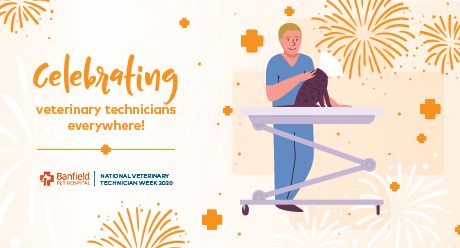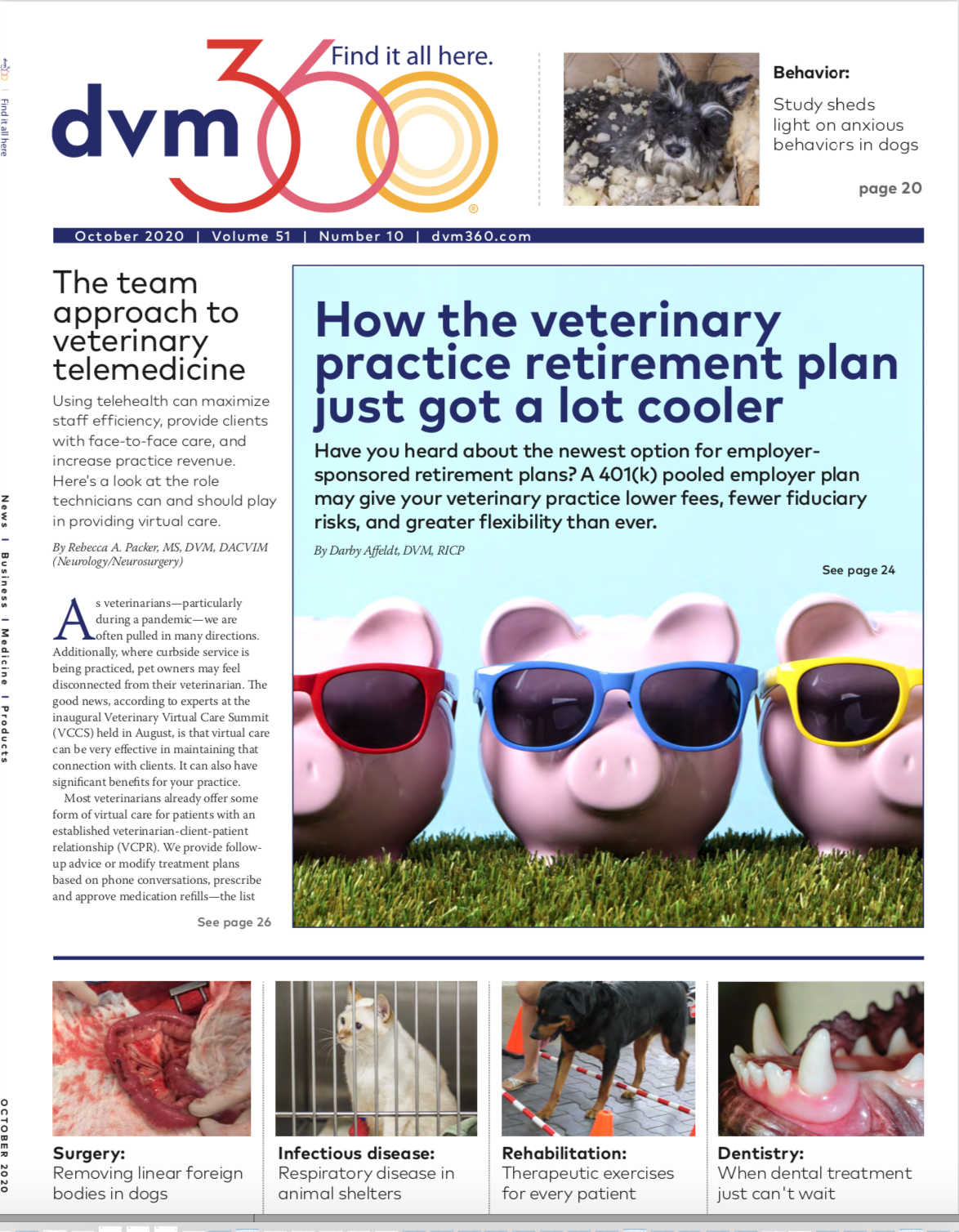The team approach to veterinary telemedicine
Using telehealth can maximize staff efficiency, provide clients with face-to-face care, and increase practice revenue. Here’s a look at the role technicians can and should play in providing virtual care.
famveldman/stock.adobe.com


As veterinarians—particularly during a pandemic—we are often pulled in many directions. Additionally, where curbside service is being practiced, pet owners may feel disconnected from their veterinarian. The good news, according to experts at the inaugural Veterinary Virtual Care Summit (VCCS) held in August, is that virtual care can fill that client need. It can also have significant benefits for your practice.
Most veterinarians already offer some form of virtual care for patients that have an established a veterinarian-client-patient relationship (VCPR)—we provide follow-up advice or modify treatment plans based on phone conversations, we prescribe and approve medication refills, the list goes on. We just do not get compensated for it, and we do not label it telemedicine. When more formal telemedicine sessions replace or enhance those informal calls, however, the clients’ need for face-to-face interaction is met, and your practice benefits from increased productivity and additional income.
What many veterinarians don’t realize is that a capable veterinary technician can play an important role in these telemedicine visits. During the VCCS, an expert panel explored the role of technicians in providing virtual care, including limits and liability considerations, as well as the benefit of empowering these team members to maximize their skill set.
The technician’s role in virtual care
In many veterinary hospitals, the extent of the technician’s role in telemedicine and virtual care is in speaking with clients to perform triage via telephone or email. Although this task is certainly useful, there is much potential to expand their role for the benefit of both the clients and the practice.
Technicians sometimes fear giving advice, but Serena Pudelski, RVT, owner of The Traveling Tech and Pet Consultant, believes they should feel empowered. While it is true that liability is a relevant concern, the medical knowledge and communication skills of these team members make them more than capable of building strong client connections and providing valuable education without crossing legal boundaries.
Legal limitations
Laws pertaining to the role of technicians in virtual health care vary widely across the country, so it is vital that everyone involved understand the legal boundaries in their state. As Pete Bill, DVM, PhD, interim director of the veterinary nursing program and professor emeritus at Purdue University College of Veterinary Medicine, noted, laws do not create the culture, they reflect the culture. We need to shift the culture.
The main legal issue relevant to telemedicine is the definition of indirect supervision. Laws permitting indirect supervision are necessary to fully utilize a technician in the virtual medicine space. In some states, such as Indiana, the definition is quite broad. The supervising veterinarian need only be reachable, and both the technician and the supervising veterinarian need to be within the practice area. The VCPR must already be established, and the tasks the technician performs with indirect supervision should be commensurate with their training, experience, and skills. Determination of the technician’s skill level is at the discretion of the supervising veterinarian.
It is important to understand that technicians in may not diagnose patients or prescribe medications in virtual care, Pudelski noted. They may triage cases, provide client education about previously diagnosed problems, and answer client questions. For telemedicine appointments that require a veterinarian, the technician can either have the veterinarian join for a portion of the call or facilitate an in-person appointment with the veterinarian and prepare the client about what to expect. All of these activities should be documented in the patient’s medical record, and telemedicine appointments themselves should be recorded and stored.
Changing the culture
Bill understands that most of us do not have the time to figure out how to incorporate telemedicine and the technician model into practice, and that use of this model requires demonstration. Technicians and veterinarians should be educated and provided with evidence that the telemedicine-technician model works.
Credentialed veterinary technicians have a great deal of medical knowledge and are far more than just a pair of hands, and veterinarians should be taught how to best utilize these team members. There needs to be more clarification and education on the roles of the veterinarian and technician in terms of liability, efficiency, effectiveness, and legal limitations. We need to motivate veterinarians and technicians to change the culture. So how do we feel more comfortable with a technician model?
Jesse Longo, LVT, operations partner at the walk-in/urgent care clinic Bond Vet in New York, New York, says that when veterinarians participate in training and goal setting for technicians, they learn their technicians’ skill sets and capabilities, and are more invested in their progress. This engagement creates a situation in which veterinarians want to empower their technicians in these roles. Other key factors include the more obvious elements of selecting and hiring technicians who share these goals and enthusiasm, providing solid training programs, and improving client communication skills.
These changing times require changes in perceptions. Technicians should not be afraid to push through barriers and break boundaries, and both technicians and veterinarians may need to consider a new model.
Rebecca A Packer, MS, DVM, DACVIM (Neurology/Neurosurgery) is an associate professor at Colorado State University College of Veterinary Medicine and Biomedical Sciences in Fort Collins. She is active in clinical and didactic training of veterinary students and residents and has developed a comparative neuro-oncology research program at Colorado State University.
